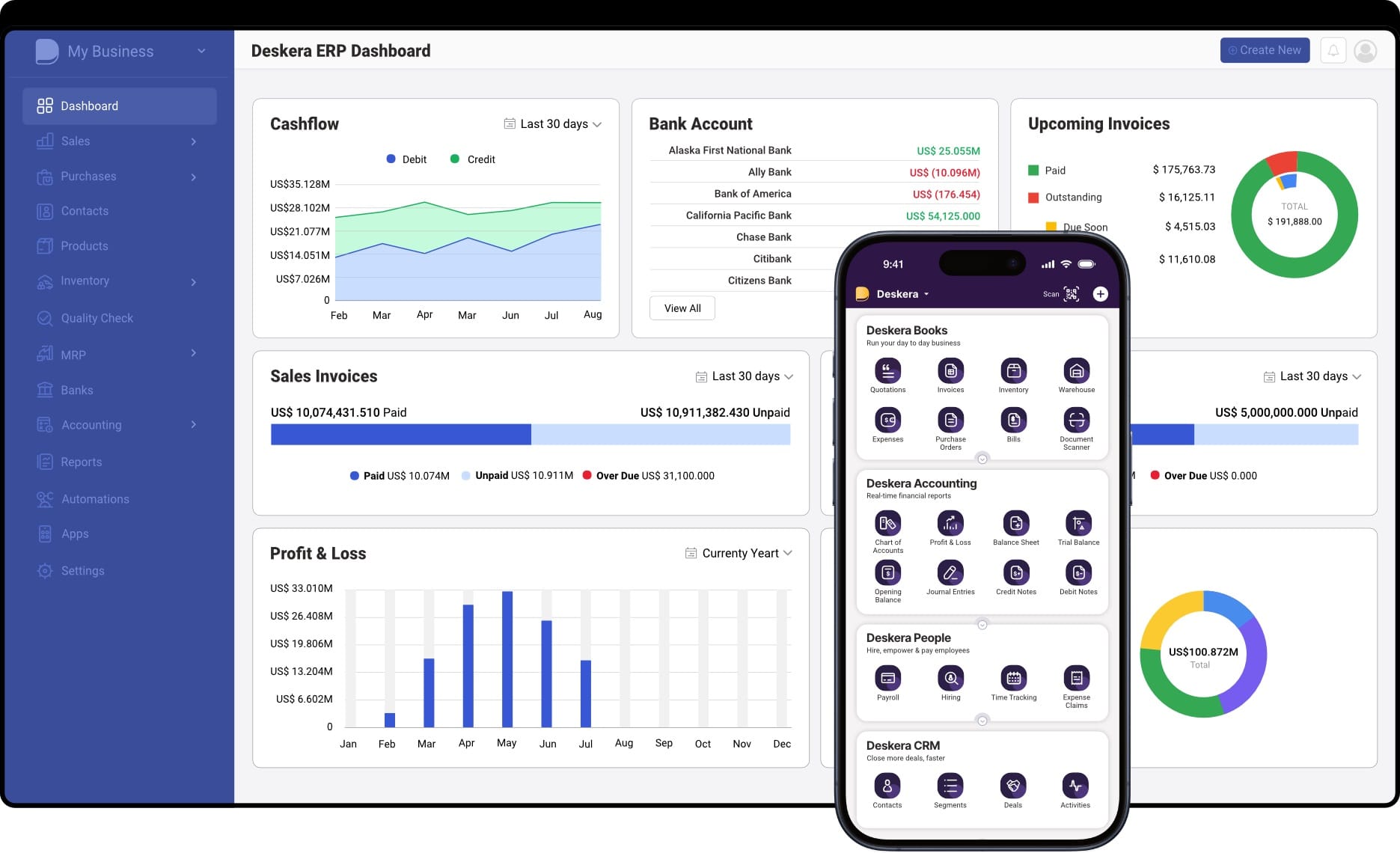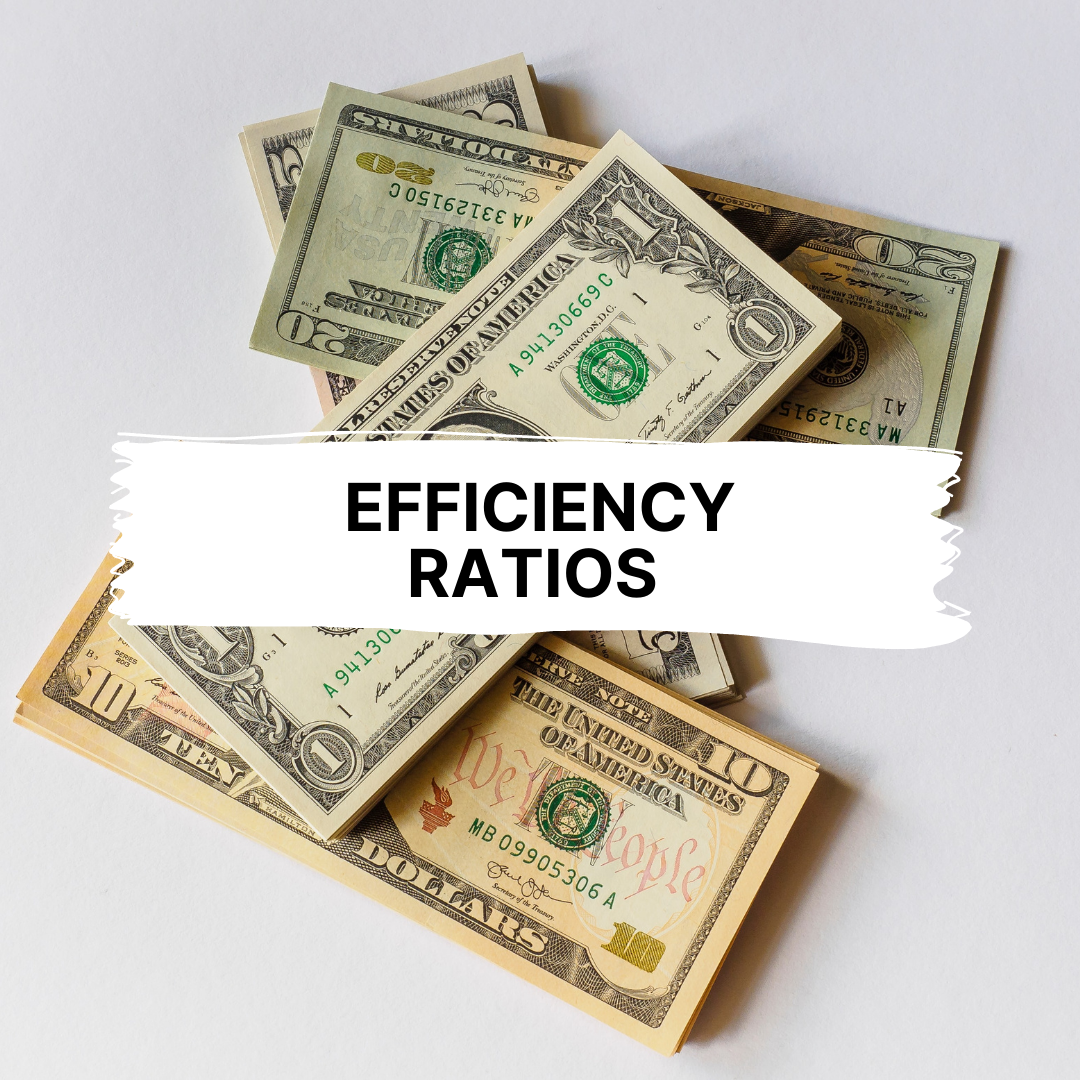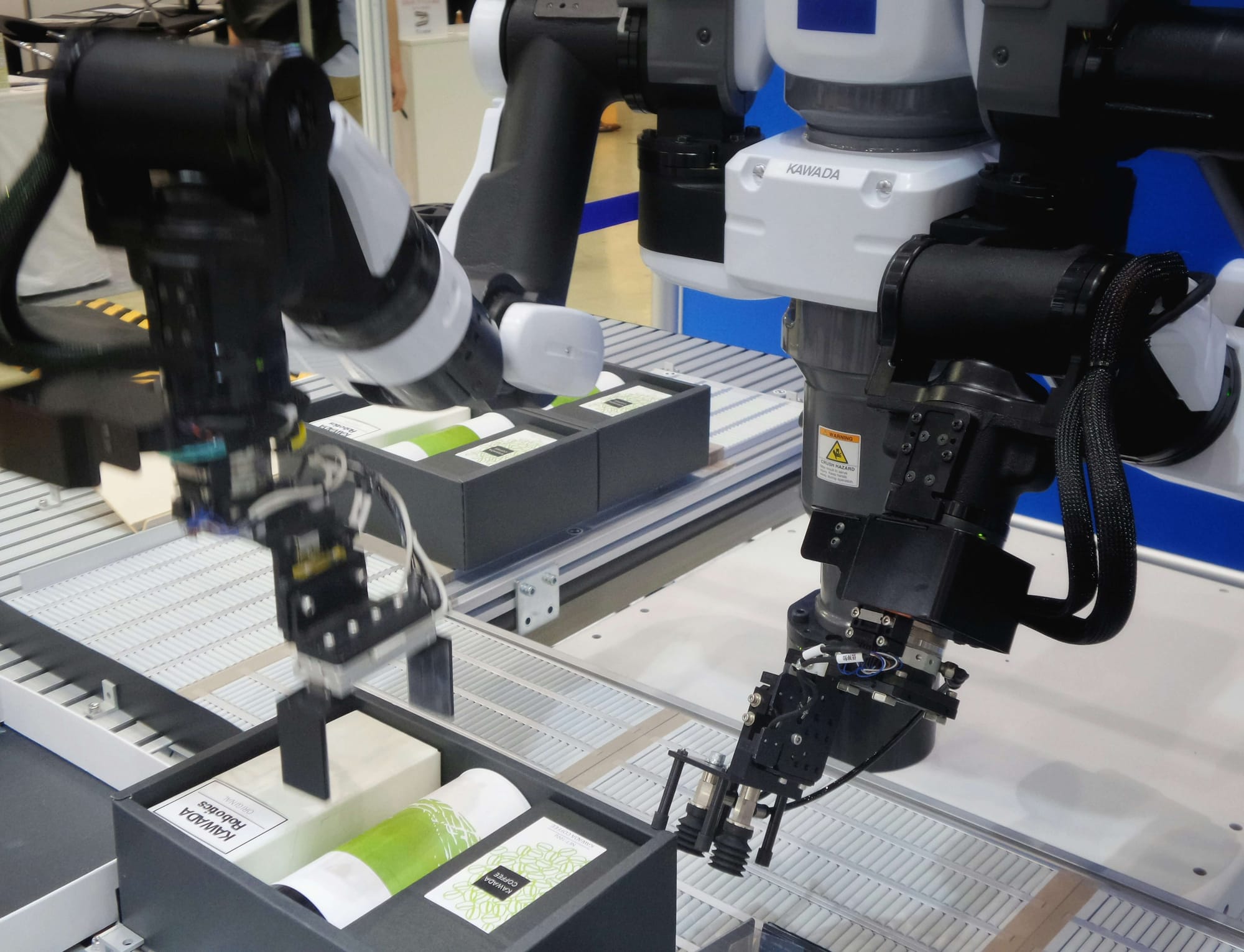What if your business could forecast customer behavior, anticipate equipment failures, or predict market trends with near accuracy? That’s the power of predictive modeling—an advanced analytical approach that turns raw data into actionable foresight. By leveraging historical data and statistical algorithms, businesses can make smarter decisions, reduce risks, and stay several steps ahead of the competition.
Predictive modeling has become a cornerstone of data-driven strategies across industries. From healthcare providers forecasting patient readmissions to retailers anticipating inventory demands, the ability to predict future outcomes is transforming operations. It's not just about guessing—it's about informed decision-making based on patterns, trends, and probabilities. In today’s rapidly evolving digital economy, predictive models provide a crucial edge.
At the heart of effective predictive modeling lies a well-integrated tech infrastructure. This is where modern ERP solutions like Deskera ERP come into play. Deskera helps businesses consolidate data from finance, sales, inventory, and production into a centralized platform. With built-in analytics, real-time dashboards, and AI-powered forecasting tools, Deskera enables organizations to unlock the full potential of predictive insights while streamlining daily operations.
In this blog, we’ll break down what predictive modeling is, explore the core techniques and algorithms used, and highlight its key advantages. We’ll also explain why businesses—regardless of size or industry—should embrace this game-changing approach to stay resilient, competitive, and future-ready.
What is Predictive Modeling?
Predictive modeling is a statistical and machine learning technique used to forecast future outcomes based on historical and real-time data. It’s a core component of predictive analytics, enabling organizations to anticipate what is likely to happen rather than react to what has already occurred. At its core, the process identifies patterns in existing datasets and builds mathematical models that can project those patterns onto future scenarios.
These models aren’t static. As new data flows in, predictive models are continuously refined to reflect changes in behavior, trends, and outcomes. For instance, a company might use a predictive model to forecast revenue based on past sales and marketing efforts. As market dynamics shift or customer behavior evolves, the model adapts—helping decision-makers stay ahead with updated projections.
The strength of predictive modeling lies in its versatility. Whether it's calculating a credit score in milliseconds, detecting fraudulent transactions, forecasting product demand, or identifying at-risk patients in healthcare, these models support real-time, high-impact decisions across industries. Even more complex domains like computational biology or quantum science leverage predictive modeling—albeit with longer processing times due to data complexity.
Today’s predictive modeling capabilities are powered by advanced machine learning algorithms and ever-growing computing power. Businesses use these tools to solve critical challenges, from customer segmentation and churn prediction to inventory optimization and anomaly detection in IT systems.
With the global predictive analytics market expected to exceed $67 billion by 2030, its role in shaping data-driven strategy is only set to grow.
Key Techniques Used in Predictive Modeling
Predictive modeling relies on a variety of statistical and machine learning techniques to uncover patterns in data and make accurate forecasts. The choice of technique depends on the nature of the problem, the type and quality of data available, and the desired outcome.
Below are some of the most widely used methods in predictive modeling:
1. Regression Analysis
Regression is one of the foundational techniques in predictive modeling. It establishes relationships between dependent and independent variables.
- Linear Regression is used for predicting a continuous outcome, such as sales figures or temperature levels.
- Logistic Regression is used when the outcome is categorical, such as whether a customer will churn (yes/no).
2. Decision Trees and Random Forests
Decision trees split data into branches based on feature values, leading to easy-to-interpret models.
- Decision Trees are useful for both classification and regression tasks.
- Random Forests combine multiple decision trees to improve accuracy and reduce overfitting by averaging predictions (for regression) or voting (for classification).
3. Neural Networks and Deep Learning
Inspired by the human brain, neural networks are powerful models for detecting complex, non-linear patterns.
- Shallow neural networks are effective for simpler prediction tasks.
- Deep learning models, with multiple hidden layers, are suitable for large datasets such as image, speech, or text data.
4. Support Vector Machines (SVM)
SVMs are highly effective for classification tasks. They work by finding the optimal boundary (hyperplane) that best separates different classes in the data. SVMs are especially useful for high-dimensional data with a clear margin of separation.
5. Time Series Analysis
Time series models are used when data is collected over time and past values influence future outcomes.
- ARIMA (AutoRegressive Integrated Moving Average) and Exponential Smoothing are popular for trend and seasonality analysis.
- LSTM (Long Short-Term Memory) models, a type of neural network, are increasingly used for complex time series forecasting.
6. Ensemble Methods
These techniques combine the strengths of multiple models to produce more accurate predictions.
- Boosting improves performance by focusing on errors made by previous models.
- Bagging, like in Random Forests, reduces variance by averaging multiple predictions.
Each of these techniques has its strengths and ideal use cases. In many scenarios, practitioners use a combination of methods or try multiple models before selecting the best-performing one.
Types of Predictive Models
Predictive modeling isn’t a one-size-fits-all approach. Depending on the nature of the problem and the desired outcome, different types of predictive models are used to deliver insights.
Thanks to advances in AI, machine learning, and analytics, many of these models are now pre-built into modern predictive platforms, making them faster and easier to implement across use cases.
Here are the most commonly used types:
1. Classification Model
One of the most straightforward and widely used predictive models, the classification model sorts data into categories based on learned patterns. It’s ideal for answering yes/no or multi-category questions.
- Example: Will this customer churn? Is this transaction fraudulent? Is the email spam or important?
2. Regression Model
Regression models predict a continuous numeric value rather than a category. By identifying relationships between variables, these models are commonly used in financial forecasting and resource planning.
- Example: Predicting a customer’s lifetime value, monthly revenue, or real estate price.
3. Clustering Model
This model segments data into groups (or clusters) with similar attributes. Clustering is useful when you don’t know what the categories should be ahead of time and want the model to discover them.
- Example: Grouping customers based on shopping habits or risk levels to create targeted marketing or credit strategies.
4. Forecast Model
Forecast models are designed to estimate future numeric outcomes based on historical trends. These models are particularly valuable for planning and inventory management.
- Example: Estimating how many support calls a company will receive next week, or how much lettuce a restaurant should order.
5. Time Series Model
Time series models analyze data points collected or recorded at specific time intervals. They’re essential for understanding trends and seasonality over time.
- Example: Predicting sales by quarter, website traffic over the next month, or hospital admissions week by week.
6. Anomaly Detection (Outlier) Model
This model identifies unusual or abnormal data points that differ significantly from the norm. It’s especially useful in fraud detection, system monitoring, and quality control.
- Example: Flagging a credit card transaction that doesn't align with a user’s typical spending behavior.
Each of these models serves a specific purpose and can be selected based on the business objective and nature of the data. In practice, predictive modeling platforms often integrate several of these models to improve accuracy and deliver more robust insights.
Common Predictive Algorithms
Predictive modeling relies on algorithms to uncover patterns in data and generate future outcomes. These algorithms typically fall under machine learning (ML) or deep learning categories—both subsets of artificial intelligence (AI).
While traditional ML algorithms learn from labeled data sets and statistical patterns, deep learning leverages complex neural networks to identify high-level data representations and relationships.
Below are some of the most widely used predictive algorithms:
1. Random Forest
Random Forest is an ensemble algorithm that combines multiple decision trees to produce more accurate and stable predictions.
- Use Case: Fraud detection, customer churn, medical diagnosis.
- Why It Works: Each tree in the forest votes, and the majority wins—reducing overfitting and improving generalization.
2. Gradient Boosted Trees
Unlike Random Forest, gradient boosting builds trees sequentially, with each new tree correcting errors made by the previous ones.
- Use Case: Ranking in search engines, marketing response prediction.
- Why It Works: It focuses on hard-to-predict data points, leading to high accuracy.
3. Linear Regression
A classic statistical method that models the relationship between independent variables and a continuous outcome.
- Use Case: Sales forecasting, financial analysis.
- Why It Works: Easy to interpret and fast to compute, especially when the relationship is linear.
4. Logistic Regression
A classification algorithm used when the target variable is binary (e.g., yes/no, fraud/not fraud).
- Use Case: Customer conversion prediction, credit risk scoring.
- Why It Works: Efficient for binary outcomes and interpretable through odds ratios.
5. K-Means Clustering
An unsupervised algorithm that groups data points into k clusters based on similarity.
- Use Case: Customer segmentation, behavior clustering.
- Why It Works: Fast and scalable, ideal for grouping large datasets.
6. Neural Networks
Inspired by the human brain, neural networks process data through multiple layers (input, hidden, and output) to model complex relationships.
- Use Case: Image and voice recognition, natural language processing.
- Why It Works: Excellent at capturing non-linear patterns in large, unstructured datasets.
7. Generalized Linear Models (GLM)
GLMs extend linear regression by allowing for different types of target variable distributions (e.g., binary, Poisson).
- Use Case: Insurance risk modeling, medical outcome prediction.
- Why It Works: Flexible and interpretable, GLMs can accommodate more complex relationships than linear regression.
These algorithms form the foundation of most predictive modeling platforms. Selecting the right one depends on your data type, prediction goals, and the complexity of the problem you're solving.
How Predictive Modeling Works
Predictive modeling transforms raw historical data into actionable insights by identifying patterns, learning from them, and using that learning to forecast future outcomes.
While the process can vary depending on the use case, most predictive modeling workflows follow these core steps:
1. Define the Objective
The first step is to clarify what you want to predict. This could be anything from customer churn, product demand, or fraud detection to equipment failure. Defining a clear goal helps determine what type of model and algorithm to use.
2. Data Collection and Preparation
Raw data is collected from various sources—CRM systems, ERP platforms like Deskera, web analytics tools, or IoT devices. The data must then be cleaned and preprocessed:
- Handling missing values
- Removing duplicates
- Normalizing numerical data
- Encoding categorical variables
- Splitting into training and test sets
Well-prepared data is critical to building accurate models.
3. Feature Selection and Engineering
Not all data points are equally important. Feature selection involves identifying which variables (or features) are most predictive of the target outcome. Feature engineering may also be done to create new variables that better represent the patterns in the data.
4. Choose a Predictive Algorithm
Based on the type of problem (classification, regression, etc.), a suitable algorithm is selected. For example:
- Logistic regression for binary outcomes
- Random forest for classification or regression tasks
- Prophet for time series forecasting
5. Train the Model
The selected algorithm is applied to the training dataset. During this stage, the model "learns" the patterns and relationships between inputs (features) and outputs (targets).
6. Validate and Test the Model
The model is then validated on a separate test set to evaluate its performance. Common evaluation metrics include:
- Accuracy, precision, and recall (for classification)
- Mean Absolute Error (MAE) or RMSE (for regression)
If performance is poor, tuning and retraining are done.
7. Deploy and Monitor
Once the model performs satisfactorily, it’s deployed into a real-world environment where it can make predictions on new, unseen data. However, models are not static—they need to be continuously monitored and retrained as new data comes in to maintain accuracy over time.
Modern platforms like Deskera ERP integrate predictive modeling features to help businesses make proactive decisions—be it forecasting inventory needs, anticipating customer orders, or planning financials. By combining ERP data with predictive analytics, companies gain smarter automation and more strategic foresight.
Benefits of Predictive Modeling
Predictive modeling is a game-changer for modern businesses. By analyzing past and present data, organizations can make confident, data-driven decisions that boost performance and future-proof operations.
Whether applied to marketing, finance, supply chain, or customer service, predictive modeling delivers measurable results across the board.
Here are the most impactful benefits:
1. Greater Forecast Accuracy
Predictive models process vast datasets to forecast future trends with high precision. This allows businesses to anticipate demand, monitor inventory needs, predict sales cycles, and even detect seasonal fluctuations more accurately than traditional planning methods.
2. Improved Decision-Making
With forward-looking insights, predictive modeling supports strategic planning at every level. Managers and executives can validate assumptions, assess “what-if” scenarios, and base decisions on data, not intuition—resulting in smarter investments and better risk-reward outcomes.
3. Proactive Risk Management
Predictive modeling helps identify and quantify potential threats—whether financial, operational, or environmental—before they escalate. It enables companies to create contingency plans and implement safeguards that protect both revenue and reputation.
4. Optimized Resource Allocation
By predicting future workloads, customer demand, or supply chain constraints, businesses can allocate resources—labor, capital, equipment—more efficiently. This prevents overstocking, underutilization, and production delays, improving overall productivity.
5. Increased Profit Margins
More accurate forecasts lead to leaner operations. Predictive modeling reduces overproduction, cuts unnecessary costs, and enables hyper-targeted marketing campaigns. The result? Lower operational waste and higher returns on investment.
6. Enhanced Customer Experiences
By analyzing behavior patterns and past interactions, businesses can predict customer needs and personalize their outreach. This allows for more relevant product recommendations, proactive support, and tailored loyalty programs—improving customer satisfaction and customer retention.
7. Fraud Detection and Prevention
Anomaly detection algorithms can flag suspicious activities in real-time—be it fraudulent transactions, insurance claims, or login attempts. Predictive models can recognize these outliers quickly, reducing financial loss and improving security.
8. Better Inventory Management
Predictive modeling helps maintain optimal stock levels by forecasting demand with accuracy. This leads to fewer stockouts, reduced holding costs, and improved order fulfillment, especially during peak seasons or unexpected surges.
9. Agile Marketing and Sales Strategies
Predictive analytics enables sales and marketing teams to identify high-value leads, determine the best channels for engagement, and optimize campaign timing. It supports dynamic pricing, churn prediction, and lifetime value forecasting—driving stronger ROI.
10. Faster Time-to-Insight
With real-time predictive analytics integrated into platforms like Deskera ERP, businesses can act on insights instantly. Whether it's spotting a production bottleneck or predicting a late payment, teams can intervene early and reduce response lag.
Deskera ERP empowers businesses with built-in predictive analytics across finance, inventory, CRM, and production workflows. Whether you’re forecasting demand, streamlining operations, or reducing risks, Deskera helps you convert raw data into strategic foresight for smarter, faster, and more profitable decisions.
Real-World Use Cases of Predictive Modeling
Predictive modeling isn’t just a theoretical concept—it’s a practical tool driving real-world impact across industries. From boosting customer retention to preventing equipment failure, organizations are leveraging predictive insights to improve performance, reduce risk, and gain a competitive edge.
Here are some powerful use cases:
1. Customer Churn Prediction (SaaS, Telecom, E-commerce)
Companies use predictive modeling to identify customers who are likely to cancel or stop using a service. By analyzing user behavior, support interactions, and product usage patterns, businesses can proactively engage at-risk customers with personalized retention strategies.
2. Fraud Detection (Banking & Finance)
Banks and credit card companies deploy anomaly detection models to flag potentially fraudulent transactions. For instance, a sudden high-value purchase from a new location may trigger real-time alerts, allowing immediate investigation and action.
3. Predictive Maintenance (Manufacturing & Logistics)
Predictive modeling helps manufacturers forecast equipment failure before it happens. By analyzing sensor data and machine logs, companies can schedule timely maintenance, minimize unplanned downtime, and extend asset life.
4. Sales Forecasting (Retail & Consumer Goods)
Retailers use forecast models to anticipate product demand based on seasonality, location, and buying behavior. This helps optimize inventory levels, reduce overstocking, and ensure shelves are stocked with in-demand items at the right time.
5. Credit Scoring (Lending & Fintech)
Financial institutions evaluate a borrower's creditworthiness using predictive models that factor in historical payment data, income patterns, employment history, and behavioral variables. This supports more accurate and faster loan decisions.
6. Personalized Marketing (E-commerce & DTC Brands)
Marketers use clustering and classification models to segment customers by preferences, behaviors, and purchase history. This enables highly targeted campaigns, personalized product recommendations, and increased conversion rates.
7. Healthcare Diagnosis and Prognosis
In healthcare, predictive modeling aids in disease detection and treatment planning. Models trained on clinical data can predict patient outcomes, identify high-risk individuals, and even assist in triaging emergency care cases.
8. Human Resource Planning
HR teams use predictive analytics to anticipate hiring needs, identify high-performing employees, and predict turnover. This allows companies to build stronger teams, improve engagement, and optimize workforce management.
9. Supply Chain Optimization
Predictive models help in demand forecasting, shipment scheduling, and vendor performance tracking. This ensures better coordination, minimizes stockouts, and reduces logistics costs in complex supply chains.
10. Risk Assessment in Insurance
Insurance providers assess the risk profile of policyholders using regression and classification models. By evaluating driving behavior, health records, or property data, they can set fairer premiums and prevent claim fraud.
With Deskera ERP, businesses can integrate predictive modeling directly into their daily operations—whether it’s forecasting sales, managing stock, or predicting late payments. Deskera's intelligent features help companies act on data in real time, turning insights into impact.
Challenges and Considerations in Predictive Modeling
Predictive modeling offers powerful capabilities, but it’s not without its limitations. As with any technology that deals with large volumes of data and complex computations, businesses must be aware of the potential pitfalls and critical factors to ensure models provide actionable, trustworthy insights.
1. Risk of Misguided Insights
One of the biggest challenges is building models that generate useful business insights. Sometimes, the patterns uncovered may be statistically interesting but irrelevant to business goals. If teams get sidetracked by “curious data” with little practical application, they risk wasting time, resources, and decision-making focus.
2. Data Overload and Diminishing Returns
More data doesn’t always equal better predictions. In some scenarios, excessive or irrelevant variables can skew model accuracy. For example, while coat sales rise as temperatures drop, the increase tapers off—people don’t keep buying more coats when it gets from -5°C to -20°C. Recognizing such behavioral plateaus is crucial to avoid overfitting models or drawing faulty conclusions.
3. Privacy and Security Concerns
Predictive modeling relies heavily on collecting and processing sensitive data—especially in healthcare, finance, and customer analytics. Ensuring compliance with regulations like GDPR or HIPAA, and maintaining strong data governance, encryption, and access controls are essential to build trust and avoid legal risks.
4. Limited Interpretability
Many machine learning algorithms, especially deep learning models, operate as “black boxes.” They generate accurate predictions but can’t easily explain the reasoning behind them.
This lack of transparency poses ethical and operational concerns, particularly in high-stakes industries like finance or medicine. Techniques like LIME (Local Interpretable Model-Agnostic Explanations) are emerging to improve interpretability.
5. Bias in Data and Algorithms
Historical biases embedded in data can get amplified through predictive models. For example, biased hiring or lending data can perpetuate systemic inequality. These biases are often hard to detect post-training, making it crucial to assess data quality and fairness during model development and continuously monitor for skewed outputs.
6. Generalization Challenges
Unlike humans, models struggle to generalize learning across new or varying contexts. A predictive model built for one market or demographic may perform poorly when applied to another. Techniques like transfer learning aim to address this, but generalizability remains a significant barrier to scalable implementation.
7. Insufficient Training Data
Many predictive models, especially those using deep learning, require vast datasets to perform well. In domains with limited labeled data (like rare diseases or niche markets), models may underperform or overfit. Emerging methods like one-shot learning offer promise by enabling models to learn from fewer examples.
8. High Resource Requirements
Building, training, and maintaining predictive models demands significant computational resources, skilled data scientists, and ongoing monitoring. Smaller businesses may find it difficult to allocate the required time, tools, or talent—making plug-and-play platforms like Deskera ERP a more practical choice for those seeking embedded intelligence without the overhead.
Predictive modeling is immensely powerful—but only when used with caution, ethical guardrails, and a clear business objective. Understanding its limitations is the first step toward responsibly leveraging its strengths.
Best Practices for Effective Predictive Modeling
To unlock the full potential of predictive modeling, organizations must go beyond technical implementation and align it with clear business strategies, robust data practices, and collaborative execution.
Here are some best practices to ensure predictive models deliver accurate, scalable, and actionable insights:
1. Define Clear Business Objectives
Start with a well-defined goal. Whether it's reducing churn, forecasting demand, or improving inventory planning, the predictive modeling initiative should tie directly to a business challenge. This alignment helps teams stay focused, evaluate ROI, and measure success based on relevant KPIs.
2. Ensure Data Quality and Accessibility
The quality of your model is only as good as the data you feed into it. Invest in regular data cleaning, validation, and integration processes to eliminate duplicates, handle missing values, and resolve inconsistencies. Establishing centralized, accessible, and secure data pipelines is foundational to effective modeling.
3. Choose the Right Model for the Use Case
Different predictive models serve different purposes—classification, regression, time series, or clustering. Select a model type that best fits the available data, the complexity of the problem, and the desired output.
Consider ease of interpretability, computational requirements, and integration capabilities when choosing modeling tools or platforms.
4. Validate and Test Thoroughly
Before deploying any model in a real-world environment, conduct rigorous validation using both historical and real-time data. Include cross-validation, A/B testing, and stress testing against edge cases. This ensures model reliability, highlights potential bias, and prevents overfitting.
5. Continuously Monitor and Update
Markets, behaviors, and data change—your models should evolve accordingly. Establish regular review cycles to assess model performance, refresh datasets, and retrain models when needed. Automated monitoring systems can alert teams when accuracy drops or anomalies occur, ensuring long-term reliability.
6. Foster Cross-Functional Collaboration
Build multidisciplinary teams that include data scientists, business analysts, IT specialists, and domain experts. This approach combines statistical and technical know-how with contextual business understanding, leading to more grounded, relevant model outputs.
7. Plan for Scalability
Choose modeling tools and platforms that can scale with your organization. As your business grows, your models should be able to handle increasing data volumes, more variables, and real-time processing needs. Cloud-based platforms, like modern ERP systems with built-in predictive analytics, are often ideal for this.
8. Maintain Documentation and Governance
Keep detailed records of model assumptions, training data, versioning, performance benchmarks, and validation results. Strong governance ensures transparency, reproducibility, and regulatory compliance. Define clear roles for model ownership, update protocols, and access permissions across teams.
9. Prioritize Ethical Use and Bias Mitigation
Make fairness a core part of your modeling pipeline. Regularly audit for biases in training data and model predictions. Use techniques such as fairness metrics and explainability tools (e.g., SHAP or LIME) to promote ethical use, especially in high-impact areas like lending, hiring, and healthcare.
By following these best practices, organizations can significantly increase the value of their predictive modeling efforts—transforming data into a proactive tool for strategic decision-making and sustainable growth.
Future Trends in Predictive Modeling
As data science, artificial intelligence, and computing technologies evolve, predictive modeling is becoming more advanced, accessible, and impactful. Below are the key trends shaping the future of predictive modeling:
1. AutoML and No-Code Platforms
Automated Machine Learning (AutoML) is simplifying predictive modeling by automating the selection, training, and tuning of models. No-code platforms are also empowering non-technical users—such as business analysts and marketers—to build predictive models using intuitive drag-and-drop tools, accelerating adoption across industries.
2. Real-Time Predictive Analytics
With the rise of streaming data and edge computing, predictive models are moving from batch processing to real-time decision-making. This trend is enabling use cases like fraud detection, personalized recommendations, and dynamic pricing to happen instantly, improving responsiveness and customer experience.
3. Explainable AI (XAI)
As predictive modeling increasingly influences high-stakes decisions in healthcare, finance, and criminal justice, the need for transparency is growing. Explainable AI tools like SHAP, LIME, and counterfactual explanations will become standard to interpret model behavior and foster trust among stakeholders.
4. Integration with IoT and Edge Devices
Predictive modeling is being embedded into IoT ecosystems—from smart factories to connected cars. These models help predict equipment failures, optimize energy usage, and trigger automated responses at the device level without needing to send data to the cloud.
5. Synthetic Data for Training
Access to large, high-quality datasets remains a challenge. In the future, organizations will increasingly turn to synthetic data—artificially generated data that mimics real data—to train predictive models. This approach improves model robustness while addressing privacy and compliance issues.
6. Federated Learning and Privacy-Preserving Modeling
Data privacy regulations (like GDPR and HIPAA) are pushing companies to rethink how they train models. Federated learning allows models to be trained across multiple decentralized devices or servers without sharing raw data, enabling privacy-preserving collaboration.
7. Hybrid and Ensemble Modeling
Instead of relying on a single algorithm, future predictive models will often combine multiple techniques (e.g., decision trees + neural networks + regression) to improve performance, robustness, and adaptability across diverse business scenarios.
8. Domain-Specific Predictive Modeling Solutions
Vendors are increasingly offering industry-specific solutions tailored to unique use cases—like predictive maintenance in manufacturing, readmission risk in healthcare, or churn prediction in telecom. These turnkey models accelerate deployment and reduce complexity.
9. Democratization of Predictive Modeling
Cloud-based platforms and embedded analytics are making predictive modeling available to businesses of all sizes. As tools become easier to use, even small businesses will leverage predictive insights to optimize operations, forecast demand, and personalize customer experiences.
10. Ethical and Responsible AI Frameworks
As predictive models become more influential, ethical considerations will move to the forefront. Expect to see growing emphasis on fairness audits, bias monitoring, and model accountability frameworks that ensure predictions are not only accurate—but also just and inclusive.
These future trends point toward a predictive modeling landscape that is more intelligent, accessible, and human-centered—enabling organizations to innovate faster while making decisions with greater confidence and care.
How Deskera ERP Enhances Predictive Modeling Capabilities
Deskera ERP offers an integrated platform that simplifies data-driven decision-making across finance, inventory, sales, and manufacturing—making it a valuable tool for businesses aiming to leverage predictive modeling effectively.

1. Unified Data Infrastructure
Deskera consolidates critical business data into a centralized platform, ensuring that predictive models have access to clean, real-time, and reliable data across departments. This eliminates data silos and improves model accuracy.
2. Real-Time Analytics and Dashboards
Deskera’s real-time dashboards and analytics capabilities allow users to visualize trends, monitor performance indicators, and detect anomalies. These insights can be fed into predictive models for timely forecasting and risk assessment.
3. Demand Forecasting and Inventory Optimization
Through built-in MRP and inventory modules, Deskera enables businesses to predict demand more accurately and optimize stock levels—reducing waste, preventing stockouts, and improving cash flow.
4. AI-Powered Assistant (David)
Deskera’s intelligent assistant, David, helps interpret data patterns and offers proactive suggestions. It acts as a digital co-pilot for decision-makers, enhancing the usability and accessibility of predictive insights.
5. Custom Reporting and Scenario Planning
With customizable report templates and scenario planning features, businesses can model various "what-if" situations—helping them prepare for future market conditions or operational changes.
6. Scalable Cloud Architecture
As predictive modeling grows in complexity, Deskera’s scalable cloud infrastructure supports larger data volumes, ensuring businesses can continue to generate insights as they expand.
7. Integration and Automation
Deskera ERP integrates seamlessly with other platforms and automates workflows, ensuring that predictive insights lead directly to operational actions—whether it's auto-reordering stock, adjusting financial plans, or updating production schedules.
By pairing robust business operations with predictive analytics, Deskera ERP empowers organizations to forecast with confidence, minimize risks, and drive smarter, faster decisions across every function.
Key Takeaways
- Predictive modeling uses a combination of statistical analysis, machine learning, data mining, and AI to uncover patterns in historical data and make informed future predictions.
- Different predictive models serve unique purposes—classification, clustering, regression, time series, outlier detection, and forecasting—each tailored to specific data structures and business questions.
- Widely used algorithms like Random Forest, Gradient Boosting, Linear and Logistic Regression, Neural Networks, K-Means, and Prophet enable high-performance predictions across diverse use cases.
- Predictive modeling follows a structured pipeline: defining objectives, collecting and preparing data, selecting models, training and testing, validating accuracy, and applying predictions for decision-making.
- Predictive modeling drives smarter decisions by increasing forecast accuracy, managing risk, optimizing resources, boosting profit margins, enhancing personalization, and improving operational efficiency.
- From fraud detection and customer churn prediction to inventory planning and equipment maintenance, predictive modeling solves real-world challenges across industries.
- Data bias, lack of explainability, overfitting, data privacy concerns, and difficulty in generalizing results are major hurdles that must be addressed for trustworthy modeling outcomes.
- Success in predictive modeling requires clear business goals, clean and accessible data, proper model selection, thorough testing, regular updates, cross-functional collaboration, scalability, and governance.
- Emerging trends include automated machine learning (AutoML), explainable AI, real-time predictive analytics, edge-based modeling, and the use of synthetic data to overcome data scarcity.
- Deskera ERP supports predictive modeling by providing centralized real-time data, AI-powered insights, integrated forecasting tools, scalable cloud architecture, and workflow automation for data-informed decision-making.
Related Articles












